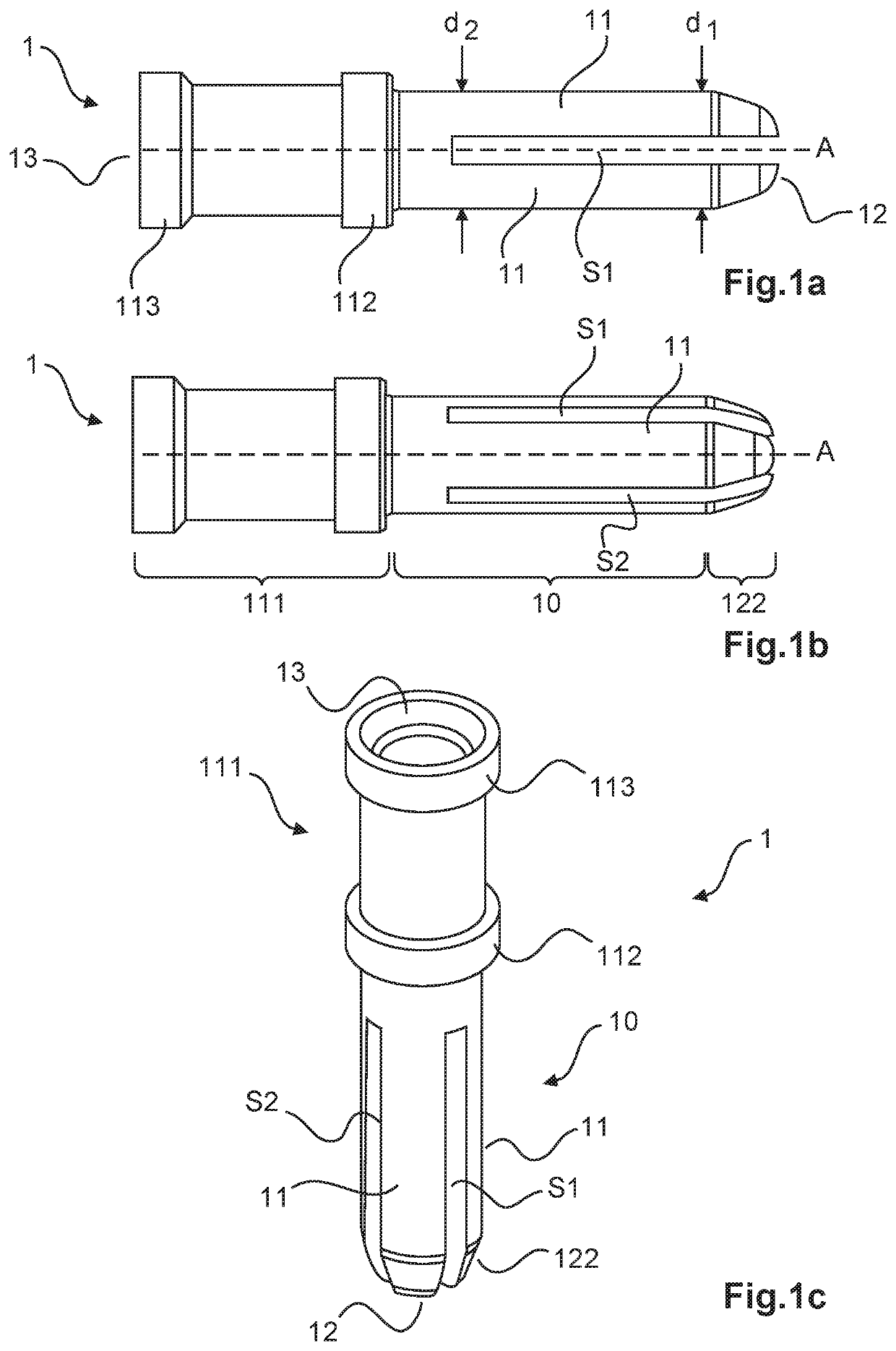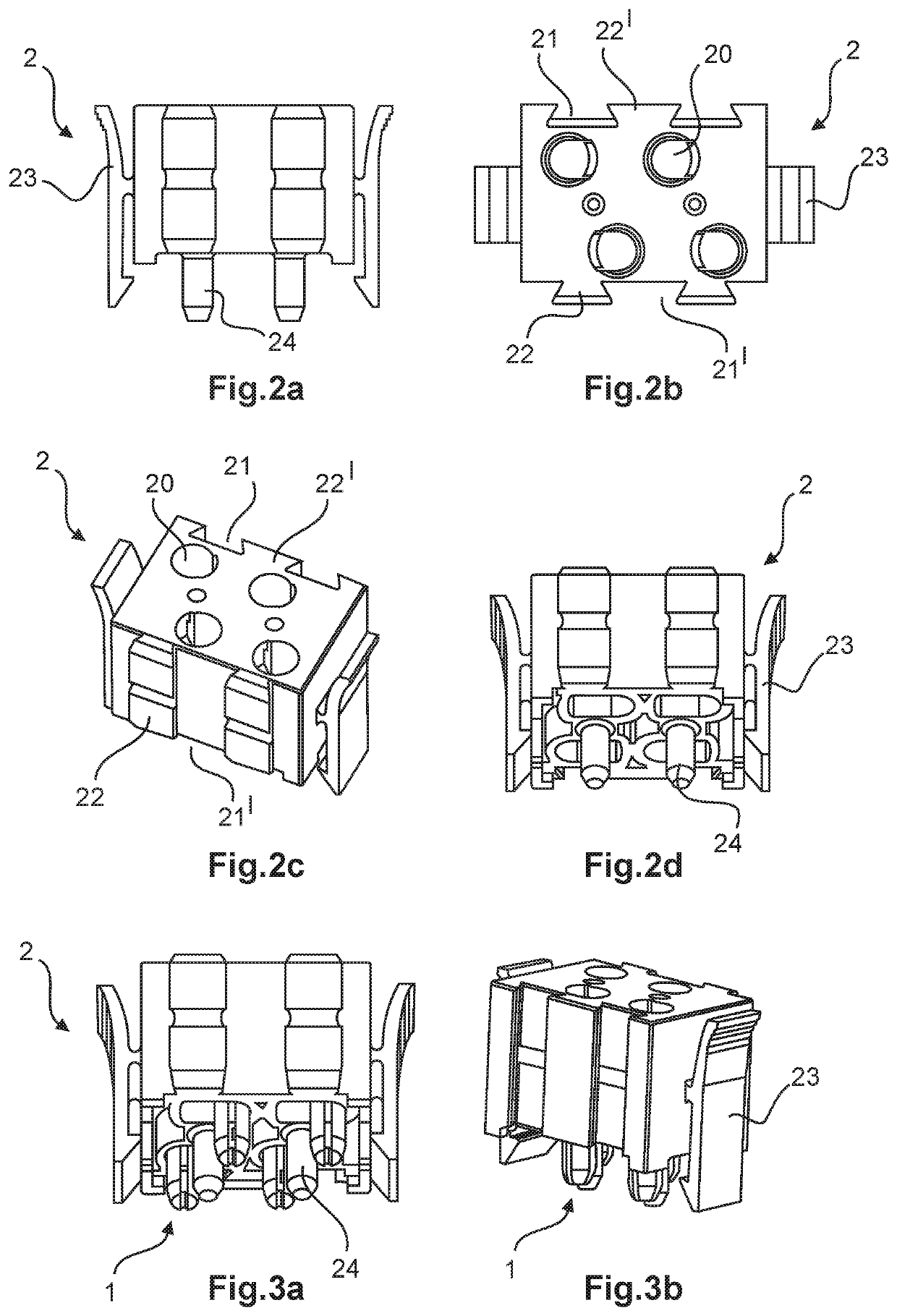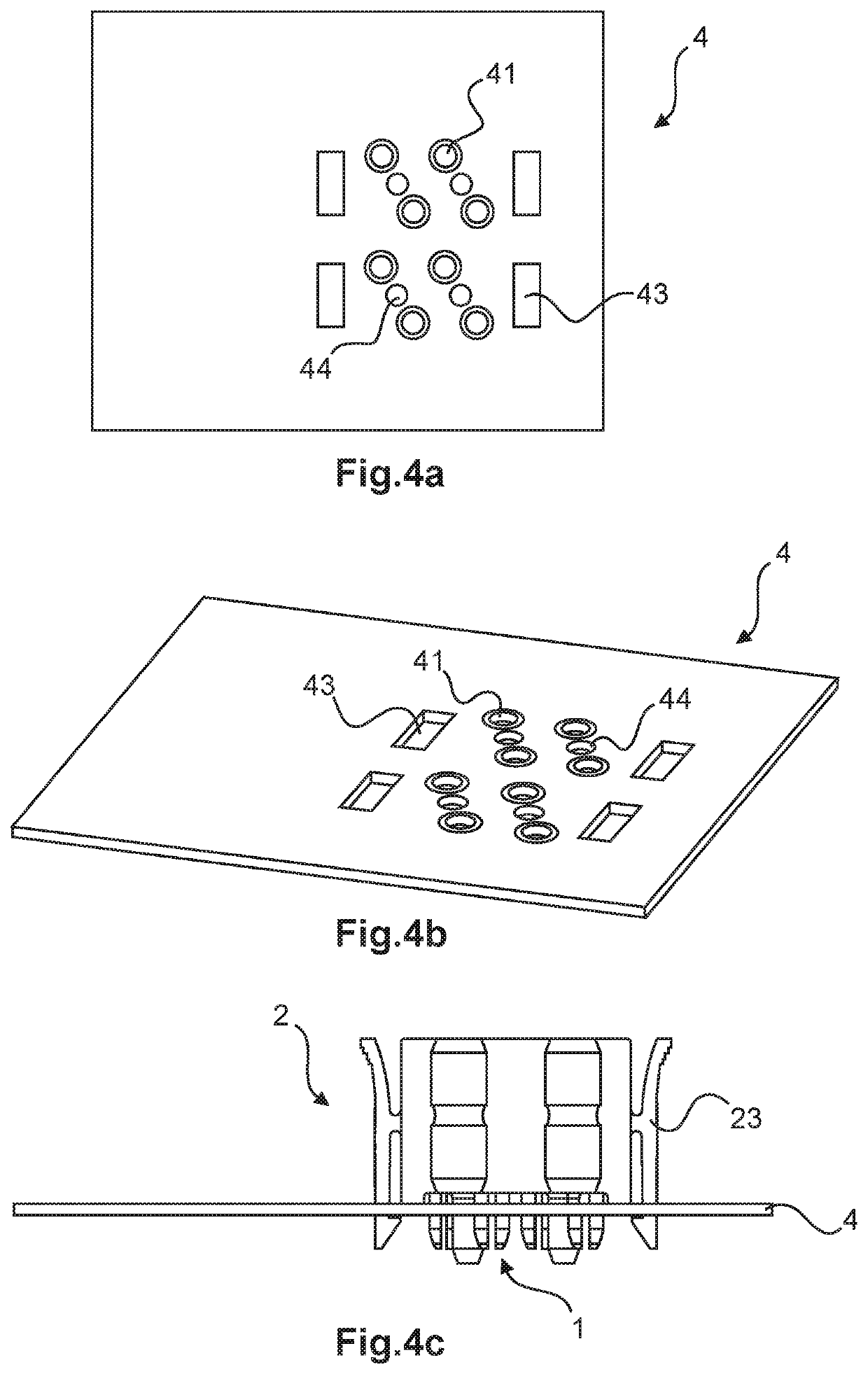Printed circuit board plug-in connection
a technology for plugging in and printing circuit boards, applied in the direction of coupling contact members, coupling device connections, printed circuit aspects, etc., can solve the problems of relatively complicated processes, only partially automated, and correspondingly expensive production
- Summary
- Abstract
- Description
- Claims
- Application Information
AI Technical Summary
Benefits of technology
Problems solved by technology
Method used
Image
Examples
Embodiment Construction
[0041]FIGS. 1a-c show various views of a pin contact 1 with an axis of symmetry which is denoted pin axis A. The pin contact 1 has a cable connection region 111 which is designed as a crimp region. The cable connection region 111 is of hollow-cylindrical form in the basic state, that is to say in the non-crimped state, and has, at its cable connection-side end, a cable insertion opening 13 with an insertion collar 113 for receiving and making electrical contact with a core of an electric cable, not illustrated in the drawing. At its other end, the cable connection region 111 has a connecting collar 112 by way of which it is connected to a connecting section 10.
[0042]At its plug-in end 12, the pin contact 1 has a tapering section 122 which is connected to the cable connection region 111 by way of the connecting section 10.
[0043]As is clear from FIG. 1a, the pin contact 1 has at least one first slot S1, which starts at the plug-in end 12 and runs through the pin axis A in the directio...
PUM
 Login to View More
Login to View More Abstract
Description
Claims
Application Information
 Login to View More
Login to View More - R&D
- Intellectual Property
- Life Sciences
- Materials
- Tech Scout
- Unparalleled Data Quality
- Higher Quality Content
- 60% Fewer Hallucinations
Browse by: Latest US Patents, China's latest patents, Technical Efficacy Thesaurus, Application Domain, Technology Topic, Popular Technical Reports.
© 2025 PatSnap. All rights reserved.Legal|Privacy policy|Modern Slavery Act Transparency Statement|Sitemap|About US| Contact US: help@patsnap.com



